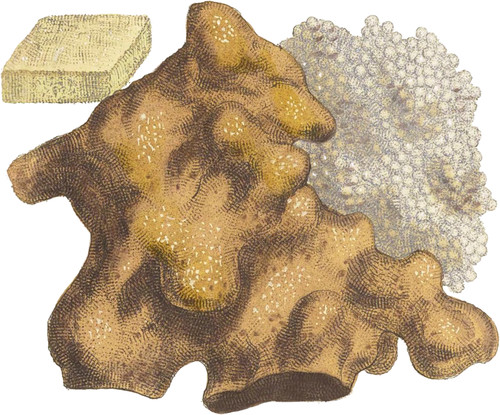 Enlarge
Enlarge
British Mineralogy
Siliceous Sand
- Class 2. Earths.
- Order 1. Homogeneous.
- Gen. 4. Silex.
- Spec. 1. Quartz.
The Sandstone of Fontainbleau is well known to crystallize in elegant groups of very neat rhombs, that represent the inverse Carbonate of Lime, containing one third or more of Carbonate of Lime, which appears to guide the formation*. I have met with nothing like it as yet in Great Britain. One of my sons, however, some six or eight years since, brought me some flatted Cubes or right-angled Crystals, which he found among sand said to come from the neighbourhood of Ryegate. Some were partly cemented by a little (Carbonate of Lime, and others were so loose that they could scarcely be handled without breaking. As I know of nothing similar, I represent it here as a rarity in Great Britain. I also add a variety of Sand which somewhat resembles the Roe of Fishes, or large-grained Ketton-stone, or Pisolithus. It was brought me by Lady Wilson, who found it at Charlton, and is likewise cemented by some Carbonate of Lime. Something like it is also said to be found at Fontainblcau.
The darker and irregular specimen is from Oxford, and was taken out of the Ochre Pit. I have a large mass nearly of this description, found in the mixed Lime and Sand Stratum under the Thames at Rotherhithe, of which I do not know that any one else has preserved a specimen. This and others are more or less cemented by Lime and Oxide of Iron. We have, therefore, three remarkable formations in the Sandy Stratum, which may prove highly instructive.
- * Exotic Mineralogy, t. 1. See Proposal on the cover.

